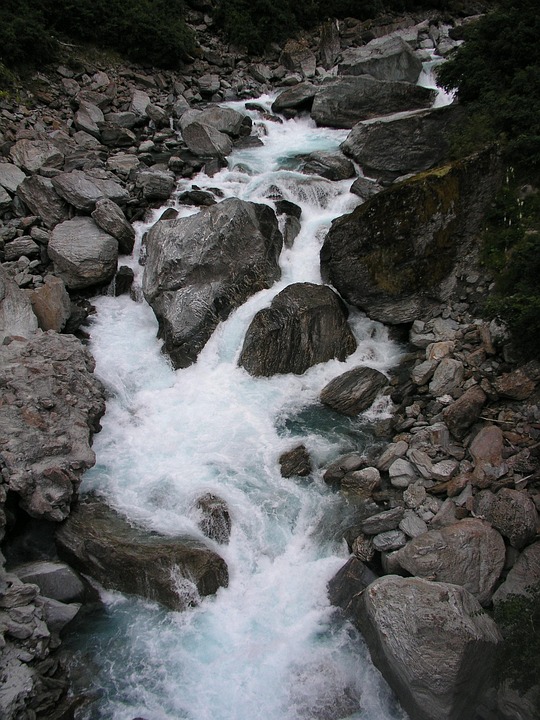And more and more, climate change aggravates the problem – damaging the roads, disturbing supply chains and threatening already fragile infrastructure with floods, droughts and extreme weather conditions.
But as global discussions are intensifying, a United Nations conference in progress in Turkmenistan aims to return the script – to help transform Lldcs Liaison linked to the connection linked to a more intelligent and more resilient infrastructure, to rationalized logistics and to stronger regional links.
Like the second day of the third United Nations Conference on developing countries without coast (LLDC3) started on Wednesday, the atmosphere of the center of the Awaza congress changed.
The presidents and the heads of government having left after the opening ceremony on Tuesday, the security measures relaxed, which allows the delegates to move more easily on the site.
But the pace of the conference has not slowed down. The meeting rooms have remained crowded, the exhibition is held burst of activity and the participants sailed on long corridors in white carpets to attend consecutive events. A large team of young multilingual volunteers helped guide participants through the sprawling complex, keeping high energy and soft logistics.
Commercial problems and “geographic gap”
The day’s discussions focused on Overcome the disadvantages of geography. The main thematic round table has been devoted to trade, which is an urgent problem for the 32 LLDC in the world, which lack direct access to sea ports. Consequently, they must count on longer and more complex routes to reach international markets, increase costs and reduce competitiveness.
And geography is not the only obstacle. Many LLDCs have trouble with obsolete infrastructure and limited use of digital tools that could speed up slow transport times.
These roadblocks do not only delay trade – they retain economic growth and widen the gap between the LLDC and other developing countries.
Tuesday, a Secretary General António Guterres Tell to journalists In Awaza, “developing countries without ancestry need intelligent logistics, rationalized systems and stronger partnerships with transit countries”, adding: “We must reduce administrative formalities, digitize border operations and modernize transport networks to reduce delays and costs.”
The figures tell the story
The impact of geography is clearly manifested in the figures.
Local developing countries represent more than seven% of the world’s population, but in 2024, they only represented 1.2% of the world’s trade in goods. It is a brutal reminder of the way in which physical barriers can result in physical barriers.
The Awaza action program for 2024-2034, adopted by the United Nations General Assembly last year, aims to change this reality. But transforming ambition into results will take daring and coordinated efforts between borders and sectors.
A sentence echoing in the corridors of the center of the Awaza congress is “of the linked connection” – a rallying call to transform geographic disadvantage into opportunity.
The state of mind counts
Umberto de Pretto, secretary general of the International Road Transport Union (IRU), said UN News: “There is evidence that if you put the right policies in place … you can be lineage … I think that the biggest obstacle for landlocked countries is the state of mind. »»
The IRU, founded in 1947, supports sustainable mobility and logistics worldwide and represents more than 3.5 million transport operators in more than 100 countries.
As M. de Preto points out, only 11 of the 32 developing countries without coastline in the world have joined the shooting system supported by the UN, which allows goods to move from origin to destination in compartments sealed in a mutually recognized customs procedure.
“The largest user of the system we are directing, the United Nations Convention called Tir, is Uzbekistan, one of the only two double hiding places. It is therefore proven that if you put good policies in place, your country will be linked, not landlocked, “he said.
Digital tools for smoother transit
New technologies offer additional means of simplifying the freight movement.
“How do you go from paper to digitally transfer of information to government authorities?” We need things like “only one window”, where you have a single admission point for electronic information so that the government can analyze this information and make decisions earlier, “said Ian Saunders, Secretary General of the World Customs Organization.
He shared examples of successful initiatives, such as monitoring cargoes in East and West Africa and the use of electronic shooting notebooks – sometimes called “goods passport” – by private companies in Central Asia. These unique documents guarantee the payment of rights and taxes suspended while the goods are in transit.
Climatic risks and smarter infrastructure
Another example came from Dmitry Maryasin, deputy executive secretary of the United Nations Economic Commission for Europe (UNECE).
Speak with UN NewsHe noted the adoption in 2023 of a roadmap for the digitization of the transcaspian corridor. Using United Nations tools and harmonized regulations, the corridor operates both land and sea transport – including rail and shipping through the Caspian Sea – to move goods between Asia and Europe.
Climate change also makes freight transport more difficult. “We see flooding of recurring roads, a vulnerability to landslides, mud flows, avalanches and droughts – all of this is now a reality in Central Asia,” said Maryasin.
In response, the one has developed a test of transport infrastructure stress test that facilitates climate risks. An online platform based on satellite data has also been launched, allowing users to superimpose commercial routes and climatic risks on a card to make more smart investment decisions.
“Countries are already using it,” said Maryasin. Efforts are underway to integrate this platform with the same developed by the United Nations Escape Office, covering South and Southeast Asia.
A day for LLDC
On Wednesday also marked the first celebration of the International Day for the dissemination of information on the special needs of developing countries without coast. Although each LLDC is faced with unique development challenges, they also share common priorities. And with nearly 600 million people living in these countries, finding shared solutions is essential.
Awaza’s message is clear: isolation is not fate. With good state of mind, effective policies and significant partnerships, landlocked countries can become linked to the affair – and prosper.
LLDC3 continues tomorrow, Thursday August 7, with round tables and events on a range of subjects, as well as a female forum. Find all our cover here.
Originally published at Almouwatin.com








